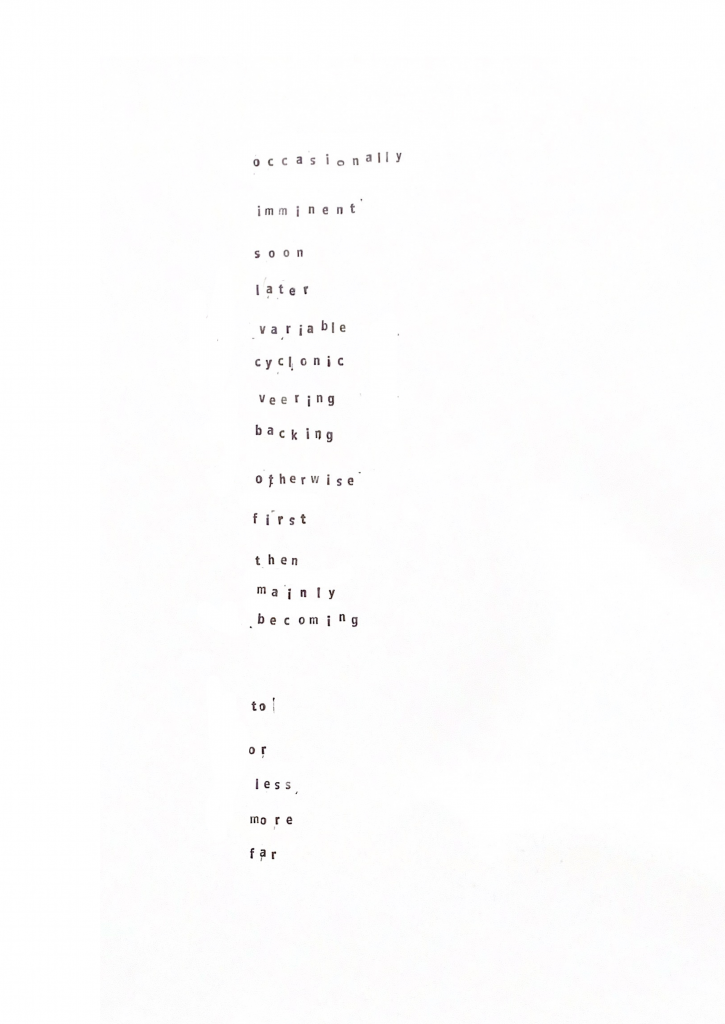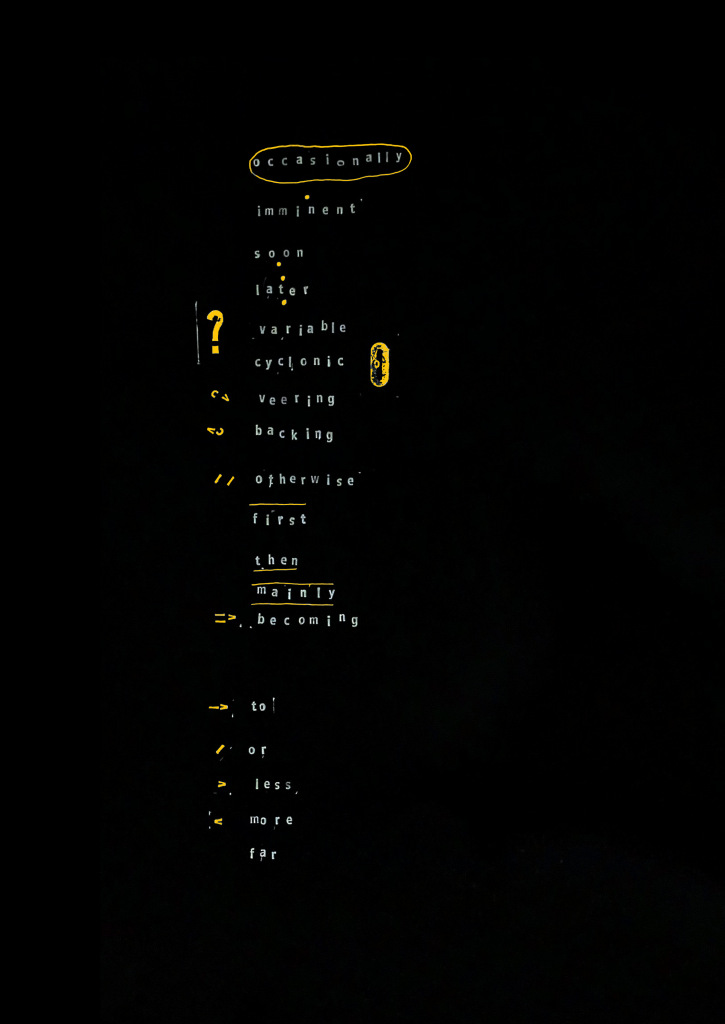During the first week of Brief 2, Methods of Cataloguing, I explored the temporality of The Shipping Forecast. Historically the forecast was only circulated via the radio. Initially, I tried to capture the transient nature of the forecast using animation.
There is a defined sequence in which the sea area zones are forecast, starting from the top right and moving clockwise. This pattern remains consistent across every forecast. The Shipping Forecast is broadcasted every 6 hours, due to the rate at which the sea state changes. The rapid speed in which the forecast shifts and changes is mirrored in the speed of the animation.
The forecast only exists orally, therefore the catalogue of the forecast demanded more permanence in form and medium. The text was stamped in ink, providing a temporal quality. The font is archaic; seemly out of place in modern society, similar to The Shipping Forecast itself. The record of The Shipping Forecast is perpetual, whereas the oral radio forecast has an ephemeral existence.


Discussions during the week one tutorial helped focus my method of cataloguing. Bridging was a key theme that arose in both methods of cataloguing. The defined lines in the sea area map bridged the expanse of the sea, and my index of the oral language acts as a bridge to contextualise the forecast. Bridging was the line of enquiry that guided my subsequent investigation.
Leave a Reply